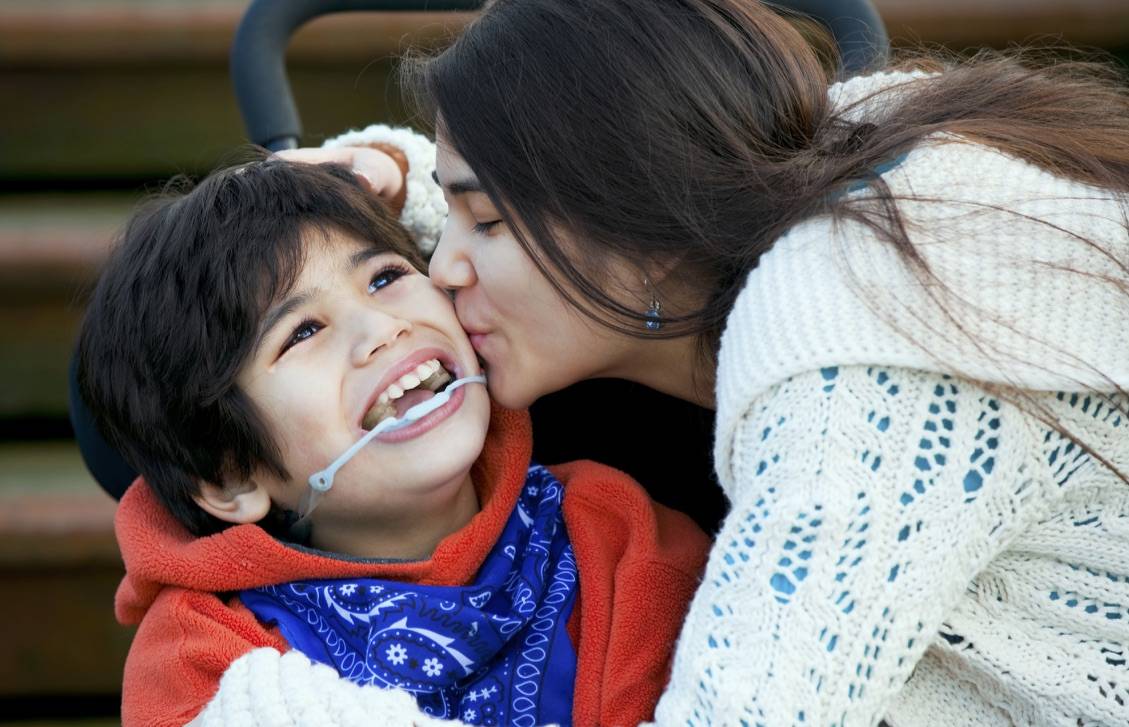What is CP?
Cerebral palsy is an umbrella term that refers to a group of disorders affecting a person’s ability to move. It is caused by abnormal development or damage to the baby’s developing brain either during pregnancy or shortly after birth. ‘Cerebral’ means the disorder is related to the brain, and ‘palsy’ refers to weakness or a problem with the muscles.
Cerebral palsy affects people in different ways, some of the common side effects include issues with movement, muscle control, muscle coordination and tone, reflexes, posture and balance.
People suffering from cerebral palsy may also have visual, learning, hearing, speech and intellectual impairments as well as epilepsy. Most people with cerebral palsy are born with it, called ‘congenital’ cerebral palsy. However in some cases, cerebral palsy can present after birth, in which case it’s called ‘acquired’ cerebral palsy.
Although cerebral palsy is a permanent and life-long condition, some of the symptoms of cerebral palsy can improve or worsen over time.
What causes cerebral palsy?
For most children and babies suffering with cerebral palsy, the cause remains unknown. Often it is hard for doctors to diagnose the cause or causes of brain trauma, however there are a number of risk factors that indicate that a baby is more likely to suer from cerebral palsy than others.
Some of these risk factors include:
- Premature birth (less than 37 weeks)
- Low birth weight (small for gestational age)
- Blood clotting problems (thrombophilia)
- An inability of the placenta to provide the developing fetus with oxygen and nutrients
- RH or A-B-O blood type incompatibility between mother and baby
- Infection of the mother with German measles or other viral diseases in early pregnancy
- Bacterial infection of the mother, foetus or baby that directly or indirectly attacks the infant’s central nervous system
- Prolonged loss of oxygen during the pregnancy or birthing process, or severe jaundice shortly after birth
Physicians and other medical professionals might not recognise the symptoms of cerebral palsy right away and as a result, some children aren’t diagnosed with the condition for months or even years after the injury. For this reason, tracing the cause of the disease can prove difficult.
Preventable birth injury?
It is important to note that in some cases, birth injuries leading to cerebral palsy can be prevented. It is believed that between 10 – 15% of cerebral palsy cases are directly caused by medical negligence or malpractice. It is cases like this that emphasise that the short time time spent in the delivery room represents a particularly delicate period in which even slight errors can have a lifelong impact on the health of your baby.
Preventable birth injuries are usually caused by:
- Failing to detect infections during pregnancy
- Adverse effects from drugs or surgery
- Neglecting proper heart rate monitoring during delivery
- Not performing a medically advisable cesarean section
- Improper use of delivery instruments, such as forceps
- Failing to detect issues with the umbilical cord
- Gross mismanagement of normal delivery procedure
- Failing to treat severe jaundice in the newborn
Finally, parents of children suffering with cerebral palsy may have grounds to pursue legal action. If you believe that your child experienced birth trauma and has suffered from cerebral palsy as a result, it is important to discuss this with a legal professional. At Blumers we specialise in birth trauma and medical negligence. Simply get in touch using our video conferencing tool to speak with a lawyer for free and identify if you have a case.
Articles for further reading:
- https://www.canberratimes.com.au/national/act/boy-with-cerebral-palsy-wins-75million-payout-from-act-government-after-lawsuit-claimed-negligence-caused-his-disability-20141015-116fdh.html
- https://cerebralpalsygroup.com/cerebral-palsy/birth-injury/
- https://www.nytimes.com/1998/10/08/nyregion/hospital-is-ruled-liable-for-girl-s-birth-injuries.html
- https://cerebralpalsygroup.com/resources/legal/

